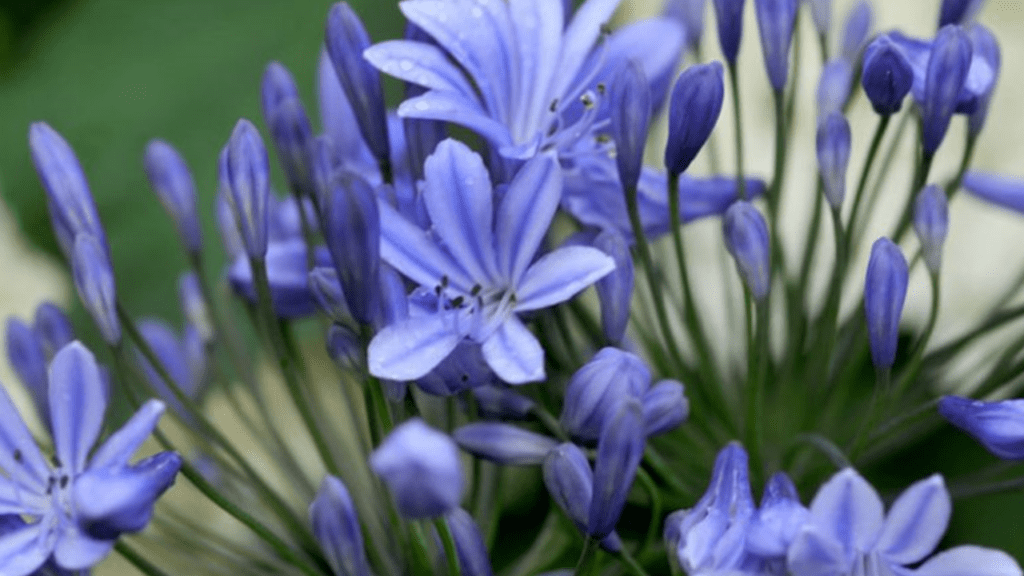
African Lily Plant Care: Tips for Growing Agapanthus
African Lily plants, also known as Agapanthus, are stunning flowers that can add a touch of elegance to any garden or landscape. In this post, we’ll provide you with comprehensive tips and guidelines for caring for these beautiful plants. Whether you’re a seasoned gardener or just starting out, this article will help you ensure that your Agapanthus plants thrive and flourish. From planting and watering to pruning and fertilizing, we’ll cover everything you need to know to keep your African Lily plants healthy and vibrant. So, if you’re ready to elevate your gardening game and add some stunning blooms to your outdoor space, keep reading for all the tips and tricks for growing Agapanthus.
Table of Contents
ToggleWhat is an African Lily Plant?
The African Lily plant, also known as Agapanthus, is a stunning flower that is native to South Africa. It is characterized by its striking blue or white trumpet-shaped flowers that bloom in spherical clusters atop tall, sturdy stems. The plant is known for its long blooming period, making it a popular choice for gardeners looking to add color to their outdoor spaces.
In terms of care, African Lily plants thrive in well-drained soil and require full sun to partial shade. They are relatively low-maintenance and can tolerate dry conditions once established. It’s important to water them regularly during the growing season, but they can withstand periods of drought. Additionally, a balanced fertilizer can be applied once or twice a year to promote healthy growth and vibrant blooms.
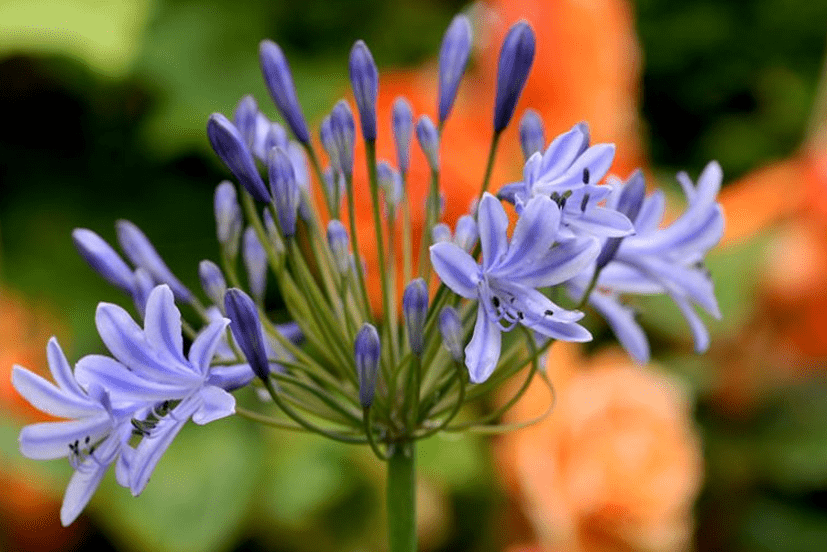
When it comes to pruning, it’s best to remove spent flower stems to encourage new growth and flowering. Agapanthus plants can also be divided every few years to prevent overcrowding and promote better flowering.
Overall, African Lily plants are a beautiful addition to any garden and can be a rewarding plant to grow for both seasoned gardeners and beginners. With the right care and attention, these stunning flowers can thrive and bring a touch of elegance to any outdoor space.
Ideal Growing Conditions for African Lily Plant
Climate and Temperature
African Lily plants are relatively low-maintenance and can tolerate dry conditions once established. It’s important to water them regularly during the growing season, but they can withstand periods of drought. A balanced fertilizer can be applied once or twice a year to promote healthy growth and vibrant blooms. When it comes to pruning, it’s best to remove spent flower stems to encourage new growth and flowering. Agapanthus plants can also be divided every few years to prevent overcrowding and promote better flowering. Overall, African Lily plants are a beautiful addition to any garden and can be a rewarding plant to grow for both seasoned gardeners and beginners. With the right care and attention, these stunning flowers can thrive and bring a touch of elegance to any outdoor space. When it comes to climate and temperature, African Lily plants prefer mild temperatures and can tolerate both cold and warm conditions. They can thrive in USDA hardiness zones 6-11 and prefer temperatures between 50-85 degrees Fahrenheit. It’s important to protect them from extreme heat and cold, so planting them in a location with some shade and protection from strong winds is ideal. With the right climate and temperature conditions, African Lily plants can flourish and bloom beautifully.
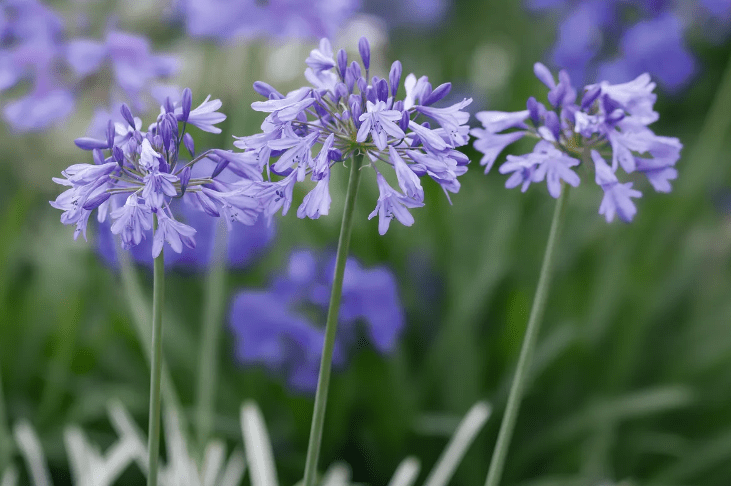
Soil Requirements
When it comes to soil requirements, African Lily plants prefer well-draining soil with a slightly acidic to neutral pH level. It’s important to avoid waterlogged or compacted soil, as this can lead to root rot and other issues. Adding organic matter, such as compost or peat moss, can help improve the soil’s structure and fertility for the plants. Additionally, incorporating a slow-release fertilizer specifically formulated for flowering plants can provide the necessary nutrients for healthy growth and vibrant blooms. By meeting the soil requirements of African Lily plants, you can create an optimal growing environment for these stunning flowers.
Light Requirements
African Lily plants thrive in bright, indirect light. They should be planted in a location with some shade and protection from strong winds to protect them from extreme heat and cold. With the right climate and temperature conditions, African Lily plants can flourish and bloom beautifully. It’s important to ensure they receive the right amount of light to support their growth and blooming. Consider the specific light requirements of African Lily plants when choosing a location to plant them in your garden.
How to Plant African Lily
Planting Location
Choosing the right spot in your garden.
When choosing the right spot in your garden to plant African Lily plants, it’s important to consider their light requirements. These plants thrive in bright, indirect light, so it’s best to plant them in a location with some shade and protection from strong winds. This will help protect them from extreme heat and cold, allowing them to flourish and bloom beautifully. Additionally, incorporating a slow-release fertilizer specifically formulated for flowering plants can provide the necessary nutrients for healthy growth and vibrant blooms. By meeting the soil requirements of African Lily plants, you can create an optimal growing environment for these stunning flowers. It’s important to ensure they receive the right amount of light to support their growth and blooming, so consider their specific light requirements when choosing a location to plant them in your garden.
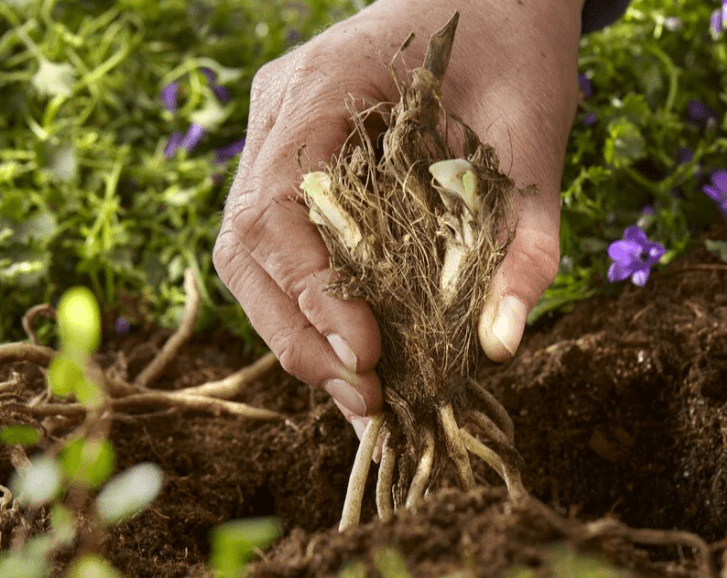
Planting Process
When planting African Lily, it’s important to choose the right spot in your garden. These plants thrive in bright, indirect light, so it’s best to plant them in a location with some shade and protection from strong winds. This will help protect them from extreme heat and cold, allowing them to flourish and bloom beautifully. Additionally, incorporating a slow-release fertilizer specifically formulated for flowering plants can provide the necessary nutrients for healthy growth and vibrant blooms. By meeting the soil requirements of African Lily plants, you can create an optimal growing environment for these stunning flowers. It’s important to ensure they receive the right amount of light to support their growth and blooming, so consider their specific light requirements when choosing a location to plant them in your garden. With the right care and attention, African Lily plants can bring a touch of beauty and elegance to your garden.
Watering Needs
The watering needs of African Lily plants are relatively low, making them a great option for low-maintenance gardeners. These plants prefer well-drained soil, so it’s important not to overwater them. To maintain the ideal moisture level, water African Lily plants when the top inch of soil feels dry to the touch. During the growing season, typically spring and summer, it’s best to water them once a week. In the winter months, reduce the frequency of watering to every two weeks. It’s important to water the base of the plant to avoid getting the foliage wet, as this can lead to disease. Additionally, using a layer of mulch around the base of the plant can help retain moisture and prevent weeds. By following these watering guidelines, you can ensure the healthy growth and beautiful blooms of your African Lily plants.
African Lily Plant Care and Maintenance
Watering Schedule
How often to water and tips for different seasons.
African Lily plants prefer well-drained soil and it’s important not to overwater them. To maintain the ideal moisture level, water the plants when the top inch of soil feels dry to the touch. During the growing season, typically spring and summer, it’s best to water them once a week. In the winter months, reduce the frequency of watering to every two weeks. It’s important to water the base of the plant to avoid getting the foliage wet, as this can lead to disease. Additionally, using a layer of mulch around the base of the plant can help retain moisture and prevent weeds. By following these watering guidelines, you can ensure the healthy growth and beautiful blooms of your African Lily plants.
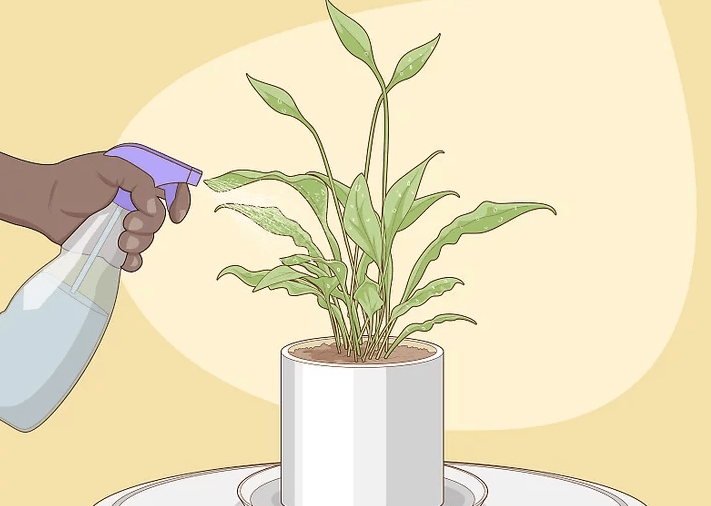
Fertilization
Best fertilizers and how to apply them.
African Lily plants benefit from a balanced fertilizer that is high in phosphorus, such as a 10-10-10 or 5-10-5 fertilizer. It’s important to apply the fertilizer in the spring, just as the plant begins to emerge from dormancy. You can also apply a light application of fertilizer in the early summer to support continued growth and flowering. Be sure to follow the instructions on the fertilizer package for the proper amount to use for your specific plant size and age. After applying the fertilizer, water the plant thoroughly to help the nutrients soak into the soil and reach the plant’s roots. Avoid applying fertilizer to dry soil, as this can lead to fertilizer burn. With the right fertilization and watering routine, you can help your African Lily plants thrive and produce beautiful blooms.
Pruning and Deadheading
Techniques to encourage more blooms and maintain plant health.
African Lily plants can benefit from a few techniques to encourage more blooms and maintain plant health. One important technique is to use a balanced fertilizer that is high in phosphorus, such as a 10-10-10 or 5-10-5 fertilizer. It’s best to apply the fertilizer in the spring, just as the plant begins to emerge from dormancy. You can also apply a light application of fertilizer in the early summer to support continued growth and flowering. It’s important to follow the instructions on the fertilizer package for the proper amount to use for your specific plant size and age. After applying the fertilizer, be sure to water the plant thoroughly to help the nutrients reach the plant’s roots and avoid applying fertilizer to dry soil to prevent fertilizer burn. Another technique to encourage more blooms is pruning and deadheading. Removing spent flowers can encourage new growth and more blooms. Pruning can also help shape the plant and prevent overcrowding. By following these techniques, you can help your African Lily plants thrive and produce beautiful blooms.
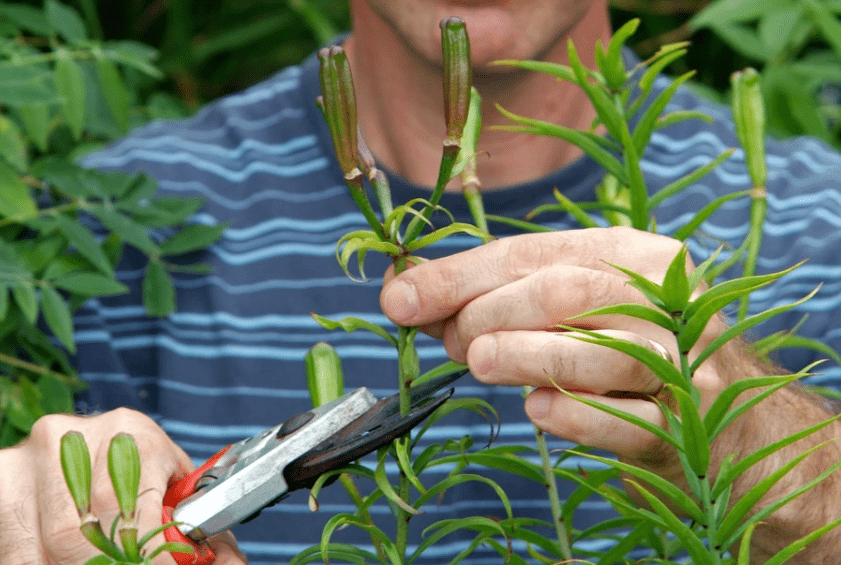
Winter Care
Protecting African lily plants in colder climates.
African lily plants can be vulnerable to colder temperatures, so it’s important to take steps to protect them in colder climates. One method to protect African lily plants in the winter is to apply a layer of mulch around the base of the plant. This can help insulate the roots and protect them from freezing temperatures. Additionally, you can consider covering the plants with a frost cloth or row cover when temperatures are expected to drop significantly. This can provide an extra layer of protection from the cold. If you’re growing African lily plants in containers, you may want to move them to a sheltered area or bring them indoors during the winter months. By taking these precautions, you can help ensure that your African lily plants survive the winter and thrive in the spring.
Pest and Disease Control
Common issues and how to address them.
African lily plants can be vulnerable to colder temperatures, so it’s important to take steps to protect them in colder climates. One method to protect African lily plants in the winter is to apply a layer of mulch around the base of the plant. This can help insulate the roots and protect them from freezing temperatures. Additionally, you can consider covering the plants with a frost cloth or row cover when temperatures are expected to drop significantly. This can provide an extra layer of protection from the cold. If you’re growing African lily plants in containers, you may want to move them to a sheltered area or bring them indoors during the winter months. By taking these precautions, you can help ensure that your African lily plants survive the winter and thrive in the spring. When it comes to pest and disease control, it’s important to regularly inspect your plants for any signs of pests or disease. If you notice any issues, you can use organic pest control methods such as neem oil or insecticidal soap to address the problem. It’s also important to practice good garden hygiene by removing any dead or diseased foliage and properly disposing of it to prevent the spread of disease. By being proactive and taking these steps, you can help keep your African lily plants healthy and thriving.
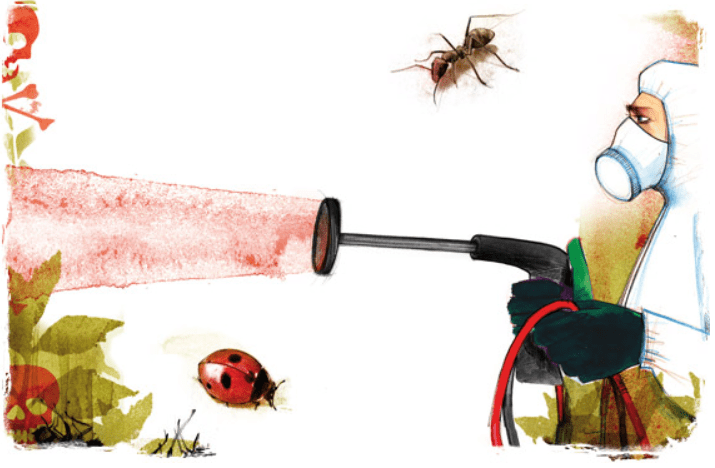
Propagation of African Lily Plant
Methods of Propagation
Division and seed propagation.
African lily plants can be propagated through division and seed propagation. Division involves separating a mature plant into smaller sections, each with its own roots, and replanting them to create new plants. This method is best done in the spring when new growth is just beginning. Seed propagation involves collecting seeds from the plant and sowing them in a suitable growing medium. This method may take longer to produce mature plants, but it can be a rewarding way to grow new African lily plants. Both division and seed propagation can be effective ways to expand your garden and share your beautiful plants with others.
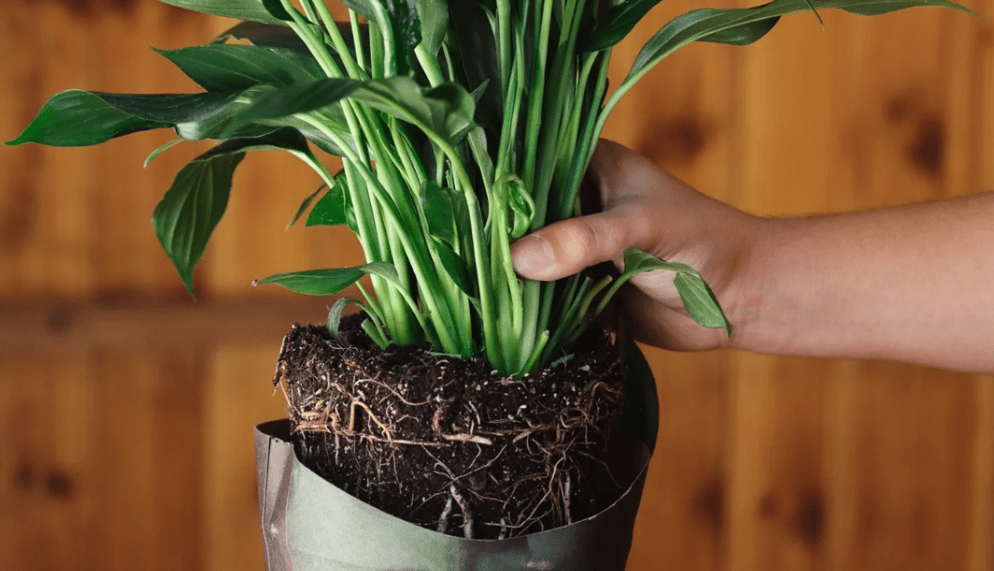
Step-by-Step Guide
Detailed instructions for dividing clumps or planting seeds.
Dividing clumps of African lily plants is a relatively simple process. To divide clumps, start by digging up the entire clump of African lily plants, being careful not to damage the roots. Once the clump is dug up, use a sharp knife to carefully cut the clump into smaller sections, making sure that each section has its own roots. Replant the divided sections in a suitable growing medium, making sure to water them thoroughly after planting.
If you choose to propagate African lily plants from seeds, start by collecting the seeds from the plant when they are ripe. Sow the seeds in a well-draining potting mix, making sure to water them regularly to keep the soil moist. It may take some time for the seeds to germinate and grow into mature plants, but with patience and care, you can successfully grow new African lily plants from seeds.
Overall, both division and seed propagation are effective methods for propagating African lily plants and expanding your garden. Just be sure to follow the detailed instructions and provide the necessary care to ensure the success of your propagation efforts.
Best Time for Propagation
When to propagate for the best results.
The best time to propagate African lily plants is in the spring or early summer when the plant is actively growing. This is the time when the plant is at its healthiest and most likely to produce successful new growth. It is important to choose a time when the weather is mild and not too hot or too cold, as extreme temperatures can stress the plant and make it more difficult for the new growth to take root. Additionally, propagating in the spring or early summer allows the new plants to establish themselves before the onset of winter, giving them the best chance of survival. Taking the time to propagate your African lily plants during the optimal growing season will greatly increase your chances of successfully growing new plants and expanding your garden.
Landscape Uses of African Lily Plant
The African lily plant, also known as Agapanthus, is a beautiful and versatile plant that can be used in various landscape settings. It is commonly used as a border plant, mass planting, or as a focal point in the garden. The vibrant blue or white flowers of the African lily can add a pop of color to any garden and create a striking visual impact. Additionally, the plant’s tall and slender stems make it a great choice for adding height and dimension to a garden bed. The African lily is also a popular choice for container gardening, as it can thrive in pots and add visual interest to patios and deck areas. Its low maintenance nature and ability to withstand hot and dry conditions make it a great choice for adding color and texture to any landscape. Whether used in formal or informal garden settings, the African lily plant is a versatile and visually appealing addition to any landscape.
Common Problems and Solutions
Yellowing Leaves
Causes and remedies.
The African lily plant, also known as Agapanthus, is a versatile and visually appealing addition to any landscape. It can be used in various landscape settings, such as border plants, mass plantings, or as a focal point in the garden. The vibrant blue or white flowers of the African lily can add a pop of color to any garden and create a striking visual impact. Additionally, the plant’s tall and slender stems make it a great choice for adding height and dimension to a garden bed. The African lily is also a popular choice for container gardening, as it can thrive in pots and add visual interest to patios and deck areas. Its low maintenance nature and ability to withstand hot and dry conditions make it a great choice for adding color and texture to any landscape, whether in formal or informal garden settings.
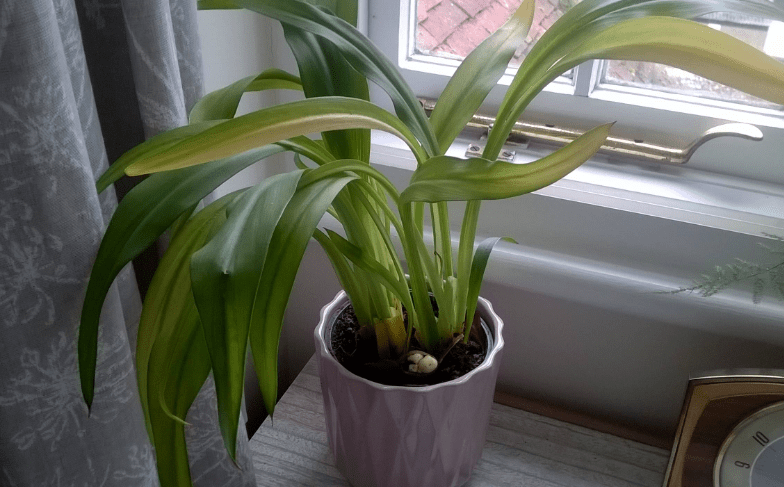
Common problems with the African lily plant include yellowing leaves, which can be caused by overwatering, lack of sunlight, or nutrient deficiencies. To remedy this issue, it is important to ensure the plant is receiving the right amount of water, sunlight, and nutrients. It is also important to monitor the soil pH and make sure it is in the optimal range for the African lily plant. Additionally, pests and diseases can be a problem for African lily plants, so it is important to regularly inspect the plant for any signs of infestation and take appropriate measures to control and prevent pest and disease issues. By addressing these common problems and implementing the necessary remedies, the African lily plant can thrive and continue to add beauty to any landscape.
Pests and Diseases
Identifying and treating common pests like aphids and diseases like root rot
African lilies are a popular choice for container gardening due to their ability to thrive in pots and add visual interest to patios and deck areas. However, they can be susceptible to common problems such as yellowing leaves, which can be caused by overwatering, lack of sunlight, or nutrient deficiencies. It’s important to ensure the plant is receiving the right amount of water, sunlight, and nutrients, as well as monitor the soil pH. Additionally, pests and diseases can be a challenge for African lily plants, so it’s important to regularly inspect the plant for any signs of infestation and take appropriate measures to control and prevent pest and disease issues. By addressing these common problems and implementing the necessary remedies, the African lily plant can thrive and continue to add beauty to any landscape.
In conclusion, caring for African Lily plants is relatively easy as long as you provide them with the right growing conditions. Make sure to plant them in well-draining soil, provide ample sunlight, and water them regularly. Additionally, fertilize the plants during the growing season and divide them every few years to promote healthy growth. By following these tips, you can enjoy beautiful, vibrant Agapanthus plants in your garden.
Frequently asked questions And Answer
The African Lily plant, also known as Agapanthus, prefers well-draining soil with a slightly acidic to neutral pH.
Agapanthus plants thrive in full sun to partial shade. They should receive at least 6 hours of direct sunlight per day.
Agapanthus plants should be watered regularly, especially during the growing season. However, it’s important to allow the soil to dry out slightly between waterings to prevent root rot.
Agapanthus plants are generally hardy and can tolerate some cold temperatures, but they may need protection during particularly harsh winters, especially if grown in containers.
Agapanthus plants benefit from a balanced, slow-release fertilizer applied in the spring and summer months to encourage healthy growth and blooming.
Agapanthus plants can be divided every few years in the spring to propagate new plants. Simply dig up the clump and carefully separate the individual plants, making sure each division has a good root system.
Agapanthus plants are relatively resistant to pests and diseases, but they may occasionally be affected by snails, slugs, or aphids. Proper watering and good air circulation can help prevent these issues.
Depending on the variety, Agapanthus plants can range from 1 to 4 feet in height and width, making them a great choice for borders, containers, or as a focal point in the garden.
